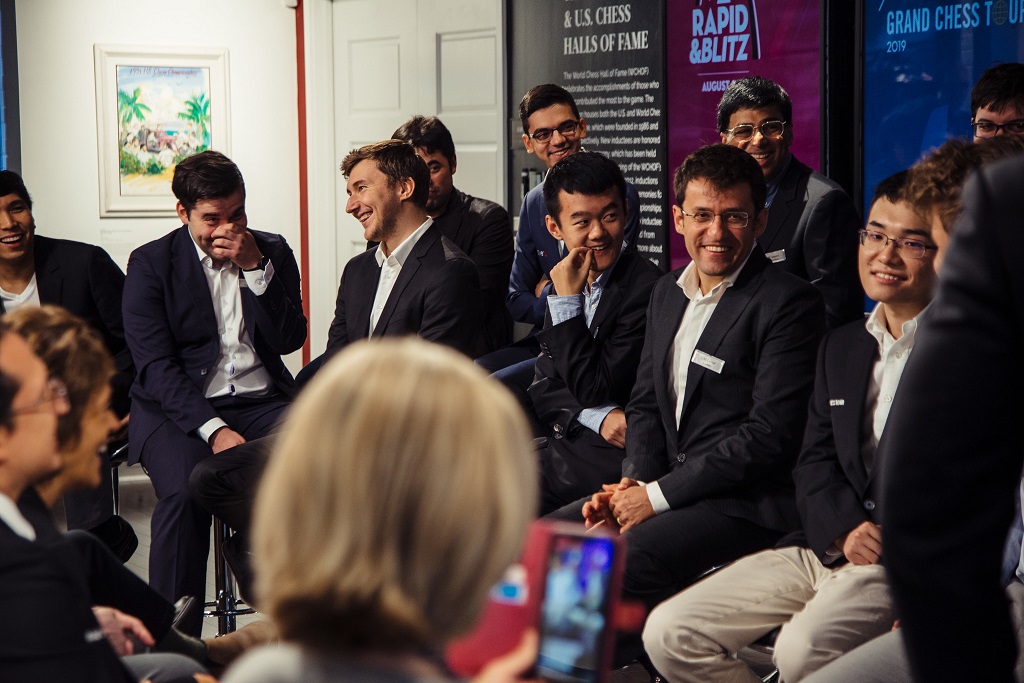Starting the second half
This is the fifth event of the tour, after Abidjan Rapid & Blitz (Ivory Coast), Zagreb Classical (Croatia), Paris Rapid & Blitz (France) and Saint Louis Rapid & Blitz, with Bucharest Rapid & Blitz (Romania) and Kolkata Rapid & Blitz (India) to follow. The four top finishers at the end of the series will play the finals to be held during the London Chess Classic at UK between November 30th and December 10th, 2019. The GCT carries a total of prize fund of $1.75 million, with the finals in London alone carrying $350,000 total prize fund.
It's important to keep in mind that the format of the GCT means that players have played unequal numbers of events in which to score points. For example, Vachier-Lagrave has played all the four GCT tournaments held so far, and hence the Sinquefield Cup is going to be his last event. (All the participants get to play three of the five Rapid & Blitz events, and both the Classical events). By contrast, Aronian and So have played only two events so far yet already have considerable points on the board, giving them a big advantage; after this end of the Sinquefield Cup, they still have two more Rapid & Blitz events to play, and hence they will know exactly how many GCT points they must to score to overtake Vachier-Lagrave.
A look at the scoring system of the GCT shows why the Sinquefield Cup is important in deciding the overall standings:
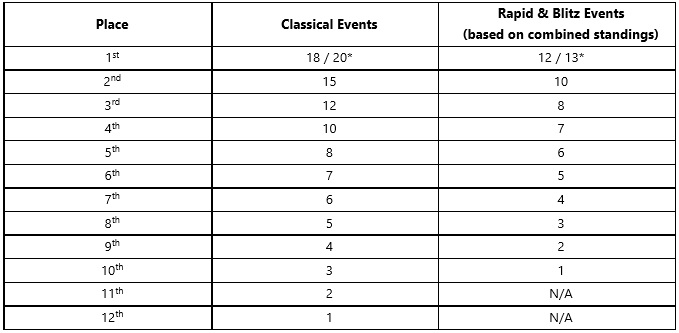
NB: An outright winner, without a tie for the first place earns two extra tour points in the classical events and one extra in the rapid and blitz events
In a way, those who play fewer rapid and blitz events in the beginning of the tour have a slight advantage compared to those who play more. It gives them a clear target points needed in the remaining classical and blitz / rapid events. On that count, one can understand that Vachier-Lagrave (with 33.3 GCT points currently) will look to give his best in the Sinquefield Cup to score the maximum points as this is his final event of the tour.
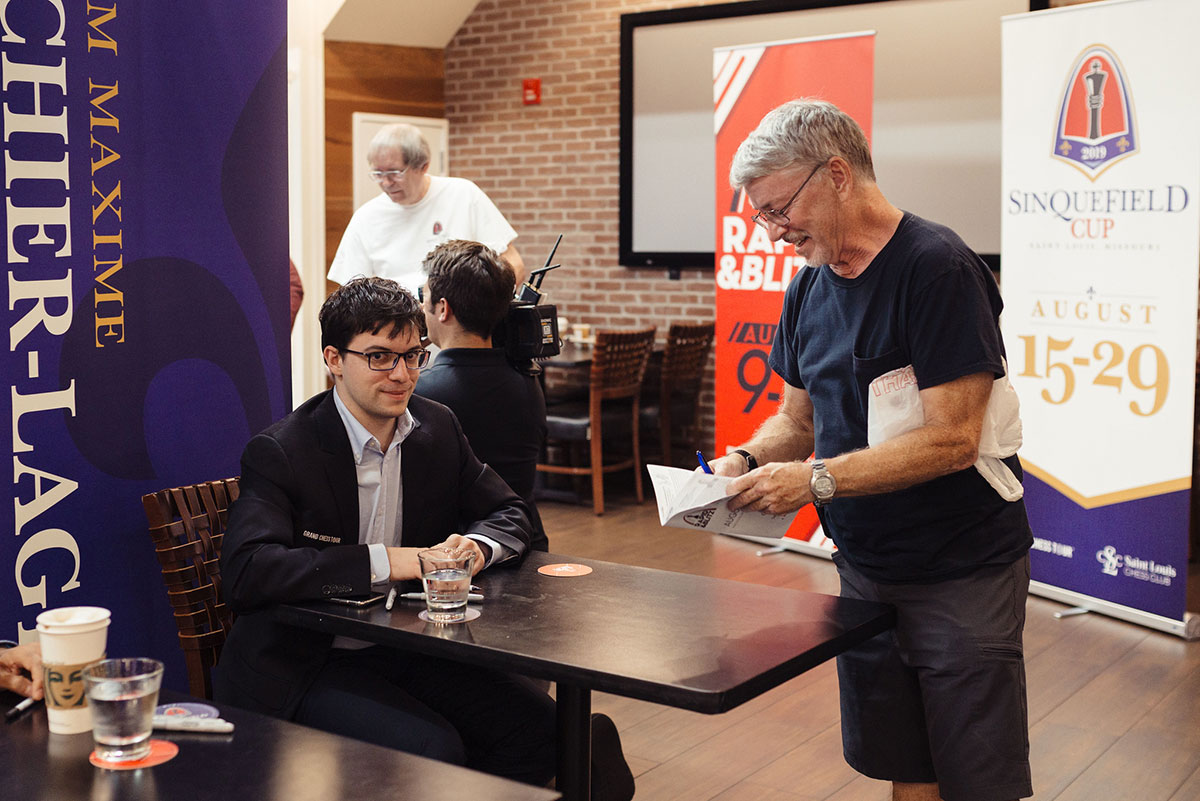
Vachier-Lagrave with a fully shaven new look, at the Autograph session of the Sinquefield Cup on Thursday | Photo: Crystal Fuller / Grand Chess Tour
It is also easy to understand that Aronian's victory in the just concluded St. Louis Rapid & Blitz event was crucial for his GCT standings, considering this is just his second event of the tour, and he already has 24 GCT points.
Just like Aronian, Wesley So too starts the Sinquefield Cup with a good 22 GCT score on the table, which means that he needs to score a decent performance in the remaining three events to qualify for London.
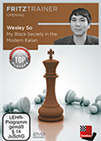 The Italian Game is considered a sound but quiet opening without early trades, giving rise to rich positions where plans are more important than forced variations. So shows black's plans on this DVD.
The Italian Game is considered a sound but quiet opening without early trades, giving rise to rich positions where plans are more important than forced variations. So shows black's plans on this DVD.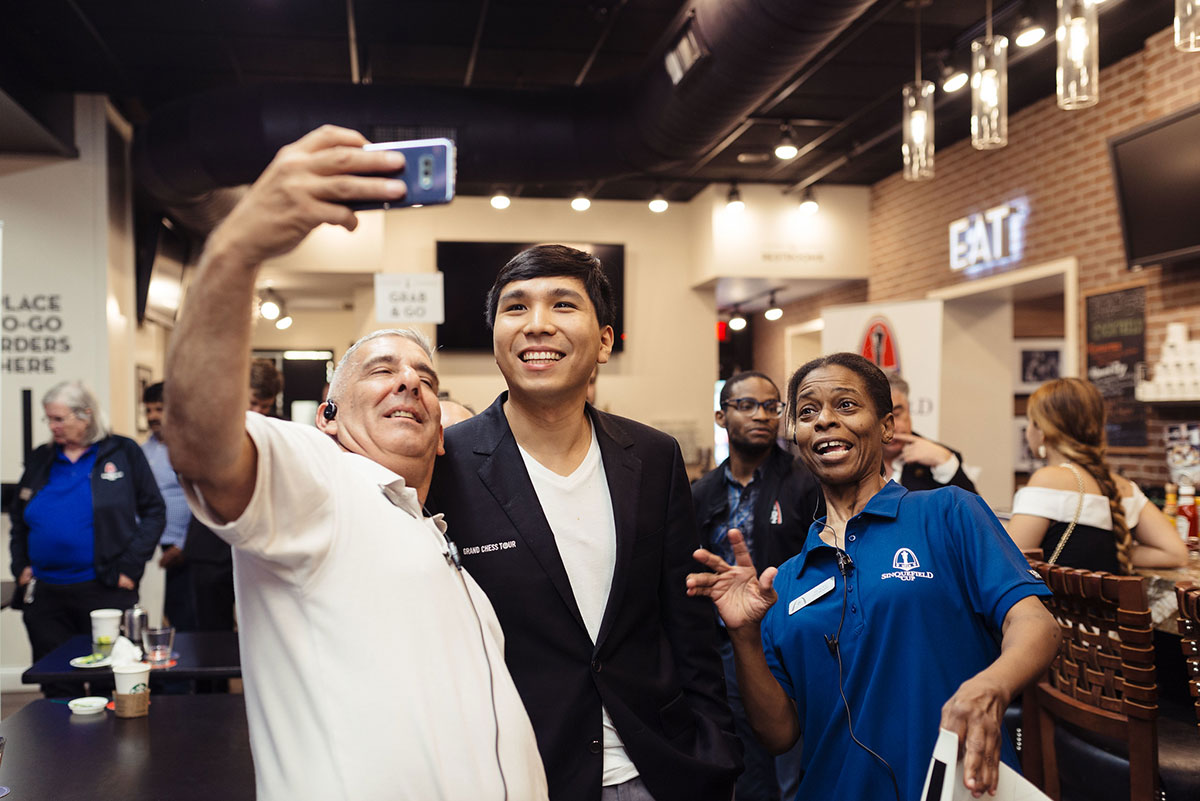
So is popular in Saint Louis with a faithful fan following | Photo: Crystal Fuller / Grand Chess Tour
After this top four comes the trio of Ding Liren, Fabiano Caruana and Ian Nepomniachtchi, who have all played three events so far, and have 21.3 points, 19 points and 18 points respectively. Needless to say, they need to put an extra effort to catch up with the top group.
Apart from So and Nepomniachtchi, Hikaru Nakamura, Viswanathan Anand and Anish Giri are the 'fresh' participants at the Sinquefield Cup — they did not play at the Saint Louis Blitz and Rapid. The tournament is bound to get interesting with these 'new' faces. Nakamura's absence was felt during the Rapid & Blitz, as he excels at faster time controls.
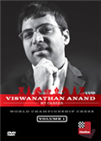 The first DVD with videos from Anand's chess career reflects the very beginning of that career and goes as far as 1999. It starts with his memories of how he first learned chess and shows his first great games (including those from the 1984 WCh for juniors). The high point of his early developmental phase was the winning of the 1987 WCh for juniors. After that, things continue in quick succession: the first victories over Kasparov, WCh candidate in both the FIDE and PCA cycles and the high point of the WCh match against Kasparov in 1995.
The first DVD with videos from Anand's chess career reflects the very beginning of that career and goes as far as 1999. It starts with his memories of how he first learned chess and shows his first great games (including those from the 1984 WCh for juniors). The high point of his early developmental phase was the winning of the 1987 WCh for juniors. After that, things continue in quick succession: the first victories over Kasparov, WCh candidate in both the FIDE and PCA cycles and the high point of the WCh match against Kasparov in 1995.
Running time: 3:48 hours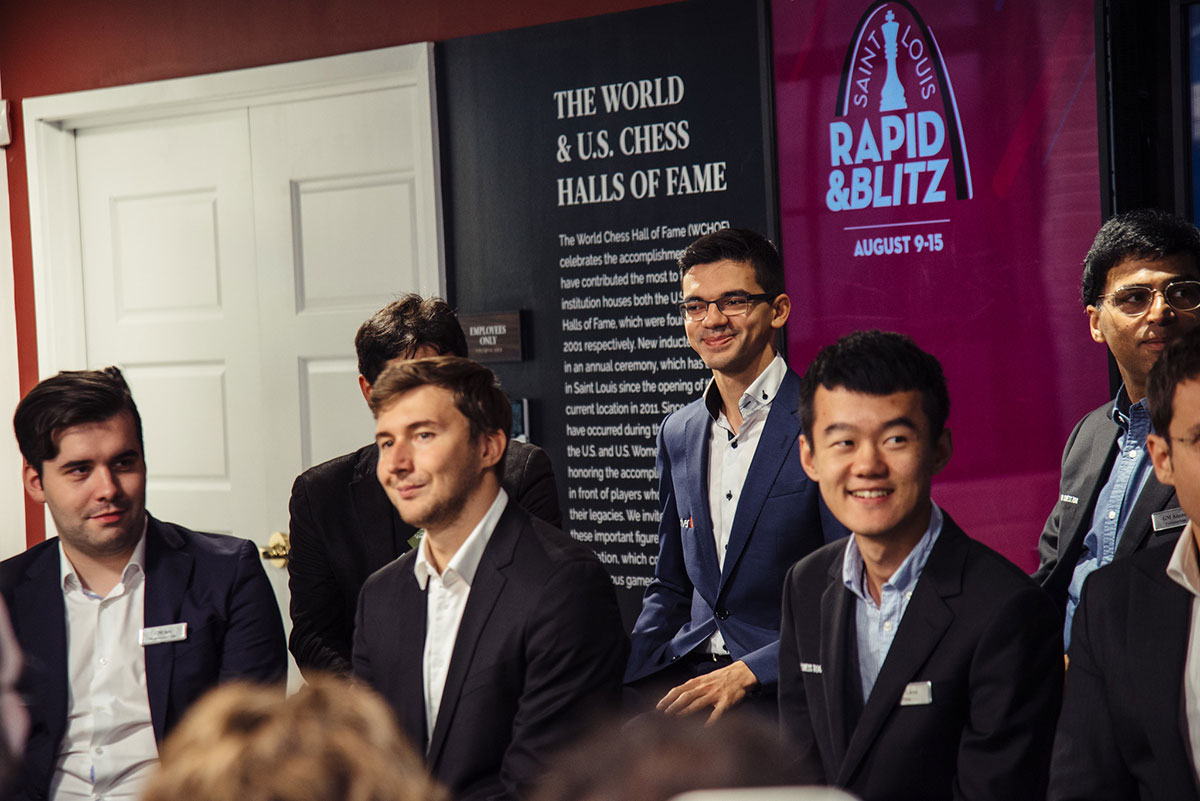
Nepomniachtchi, Karjakin, Nakamura (hidden), Giri, Ding and Anand during the inauguration ceremony | Photo: Austin Fuller / Grand Chess Tour
But more than anyone, the spotlight will be on the World Champion, Magnus Carlsen. Though he was a firm favourite to win the Rapid & Blitz due to his brilliant performances so far this year, he was only a pale shadow of himself during the tournament. He was shockingly blund in expressing his extreme disappointment about his performance, revealing his confidence level. In that context, considering that he needs to do well in the Sinquefield Cup to increase his lead, his play will be followed eagerly.
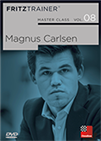 Scarcely any world champion has managed to captivate chess lovers to the extent Carlsen has. The enormously talented Norwegian hasn't been systematically trained within the structures of a major chess-playing nation such as Russia, the Ukraine or China.
Scarcely any world champion has managed to captivate chess lovers to the extent Carlsen has. The enormously talented Norwegian hasn't been systematically trained within the structures of a major chess-playing nation such as Russia, the Ukraine or China.
Carlsen in his jovial self during the autograph sessions, even face-timing with a fan's kid | Photo: Austin Fuller / Grand Chess Tour
An interesting aside of the Grand Chess Tour is that, the players agreed draws are expressly disallowed! Legally, a game can be agreed drawn only if there is a three-fold repetition or as per the 50-move rule, with the consent of the arbiter. While great for the fans, it will be interesting to observe whose life is going to get miserable because of this — the arbiters' or the players'!
Links
